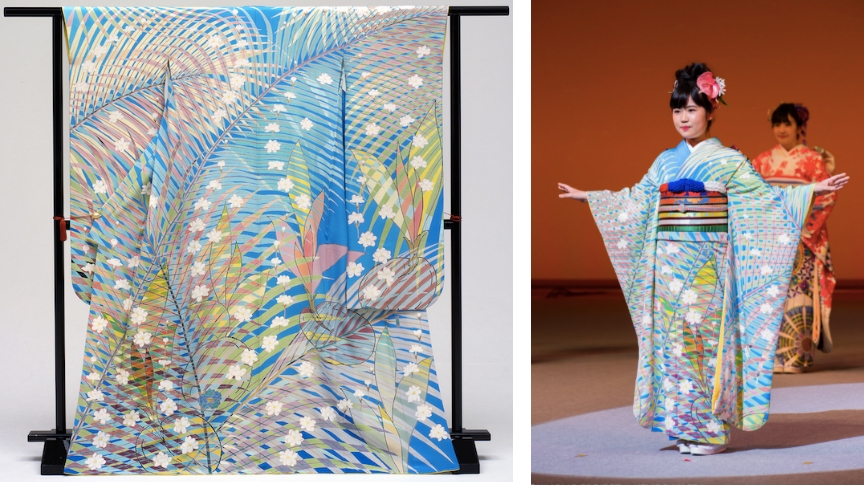The Imagine OneWorld Kimono Project took four years and dozens of artisans and designers, and the results are stunning.
Meant to honor each of the countries participating in the Tokyo Olympics, the Kimono Project enlisted the help of different designers and sponsors, along with the embassies of the competing countries, to create unique kimono and obi with references to the countries’ art, culture, and history.
Each of the kimono cost about 2 million yen (over Php911,438) to produce, with the funding coming from corporate sponsorships and crowdfunding.
Although there were 206 countries who competed in the Olympics, a total of 213 kimono were commissioned, all completed by 2020. Some of the kimonos for Asian countries are below, while entire collection is displayed in the Kimono Project gallery and in this video:

The Philippines
Completed in 2019, the Philippine kimono was designed by Hiroshi Nakamachi, who visited the country to get inspiration for his creation. He said he had come away from the Philippines remembering “the sound of the wind,” so “the color of the sunshine when looking up at the palm forest and the sound of the wind passing through the palm forest became the motif” for the Philippine kimono. The Philippines’ national flower, the Arabian jasmine, is also incorporated into the design.
The colorful obi was produced by Chikuzen Textile, and also incorporates a palm and flower motif—which the Kimono Project calls a combination of “patterns of palms and sunlight on Jasmine flowers and the passage of time.”
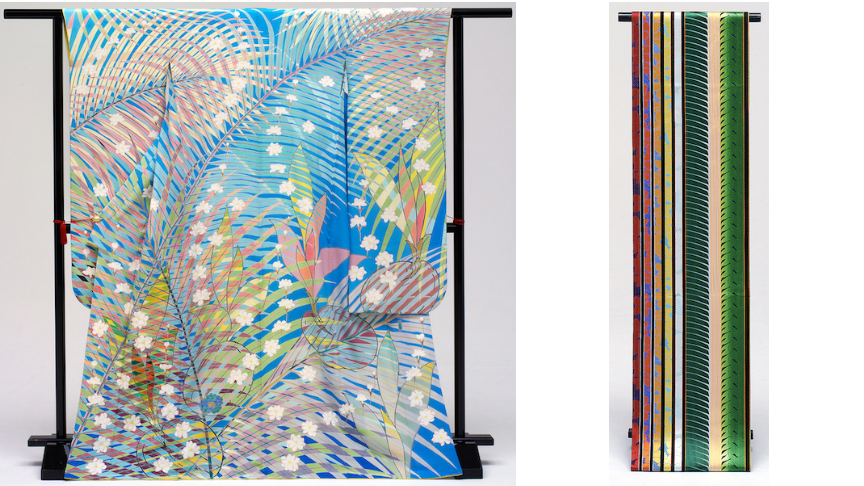
Indonesia
The Indonesian kimono features elements of Indonesian geography and culture, including the Borobodur temple, wayang theater, and a map of the Indonesian islands. The designer, Okaju, collaborated with artisans in Pekalongan, Indonesia, and in Kyoto, Japan for the various processes that went into the batik-inspired kimono.
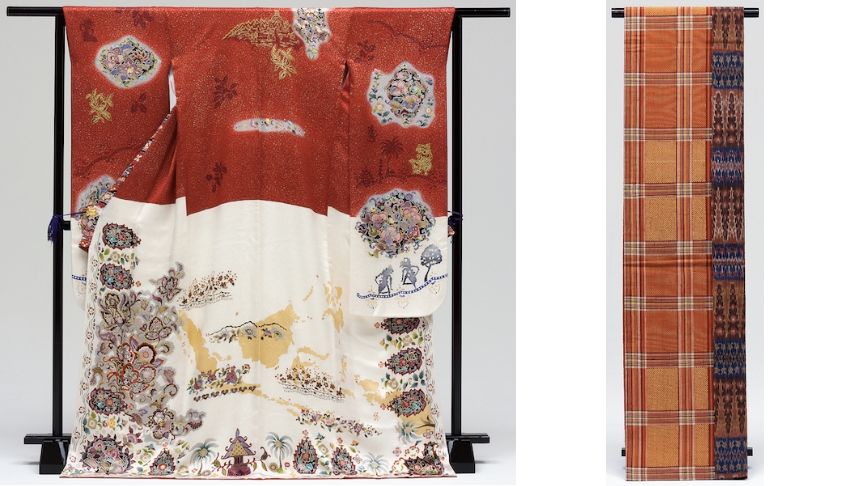
Singapore
Designer Ose Shoten calls this “an unprecedented work” because it combines Japanese Oshima tsumugi and Kasuri patterns in a patchwork-like fashion using Kyoto embroidery. The obi, by Keiko Kondo, uses the colors of the Singapore flag.
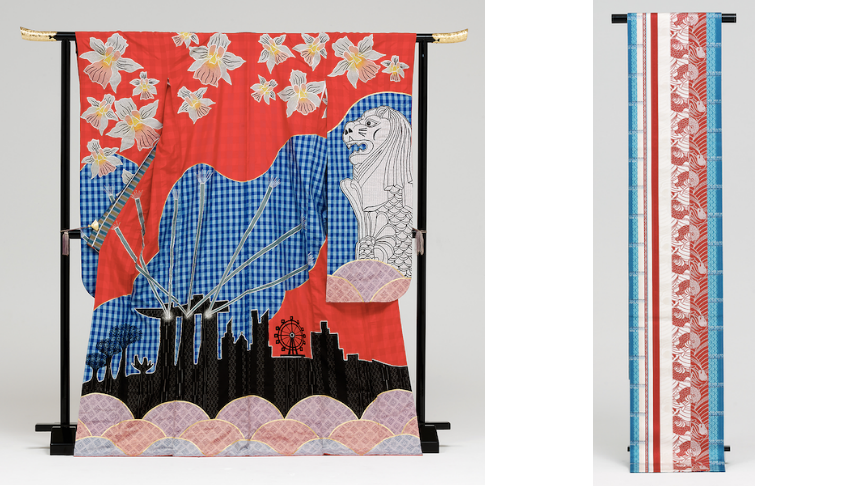
Thailand
The royally themed Thailand kimono is dedicated to the memory of King Bhumibol, and depicts flying lanterns (khom loi) amidst golden fireworks and flowers on a stark black background. The obi contains Thai script that is said to spell out a word meaning “the world is one”.
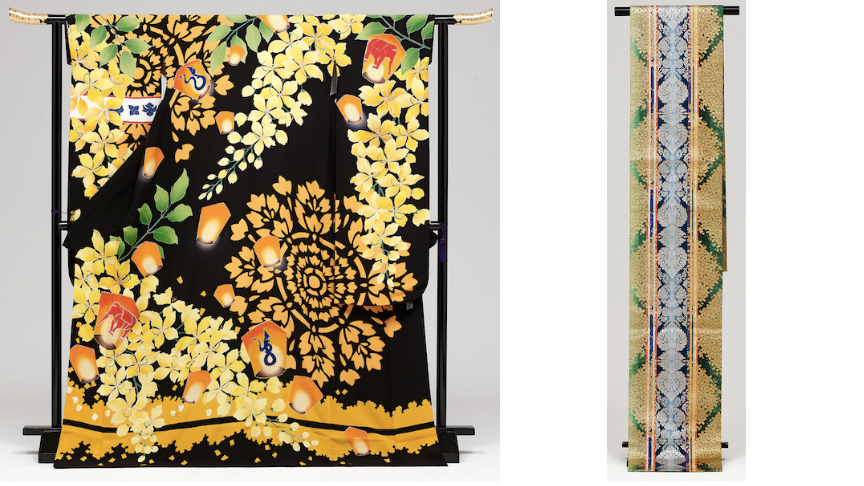
Hong Kong
Designer Kenichi Okubo incorporates the Chinese Fire Dragon and Hong Kong’s skyscrapers into his motif, along with the bauhinia orchid that has become the territory’s emblem. The obi, on the other hand, features a design by Hakata Ori, with the Four Auspicious Beasts of feng shui incorporated into a pattern that also recalls the glass facade of a modern building.
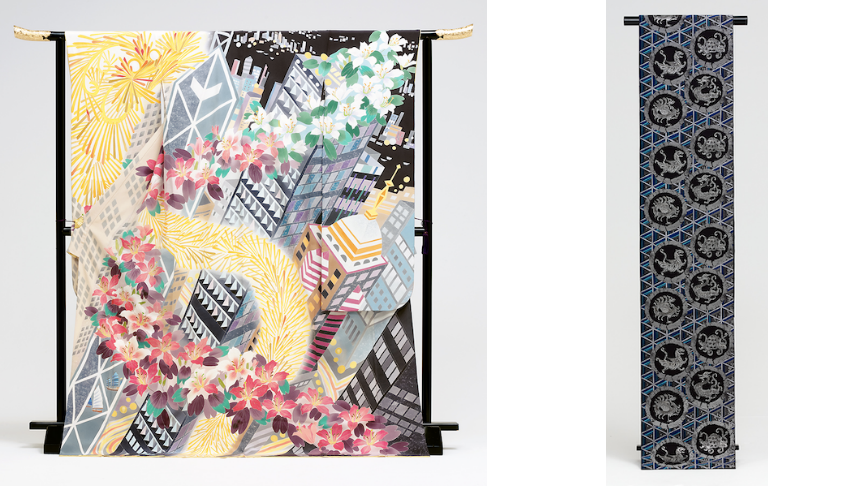
Malaysia
The Petronas Towers and the Malaysian flag are featured in this design created by Takehana-Sensho with input from students from the Fukuoka Prefectural Kurume High School. The obi is done in a Peranakan pattern, and is handwoven with real gold leaf.
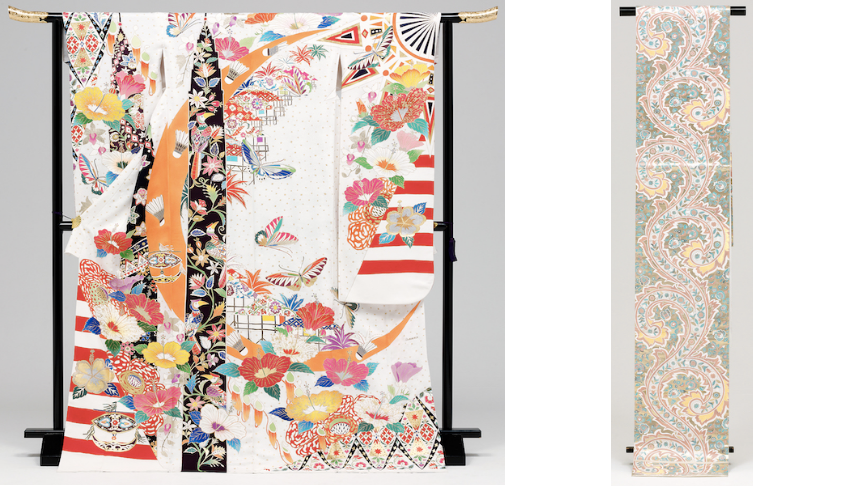
Myanmar
Designer Saori Mizuhashi used Myanmar’s yellow padauk flowers against a magenta background as the main theme, while ethnic patterns and Burmese script are also incorporated. The floral theme continues in the obi, which was created by Junichi Akamatsu.
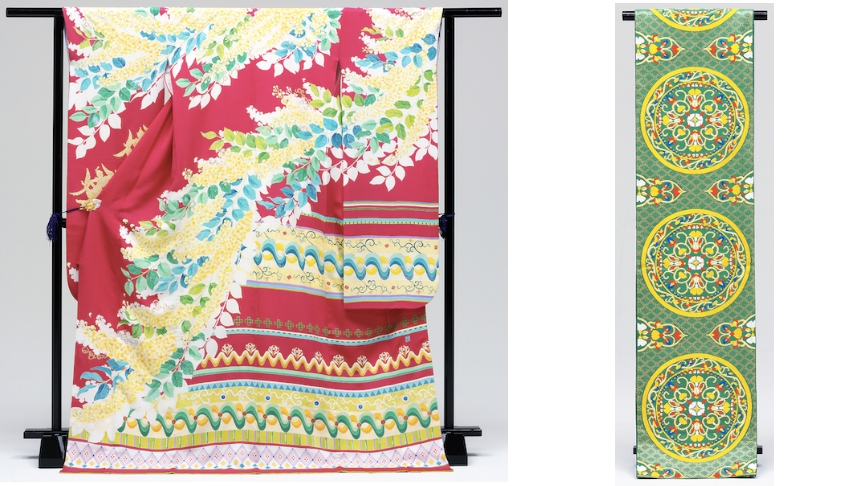
IOC Refugee Team
For this especially poignant piece, the Kimono Project approached up-and-coming artist Miwa Komatsu to create the design based on the theme of prayer. “We hope that you will feel the prayer for peace that can be seen through the custom-made pure white ‘Torres pattern’ feather coat,” says the project’s caption. The obi, designed by the same artist, features a yin-and-yang motif, with a colorful striped pattern on the back that symbolizes diversity.
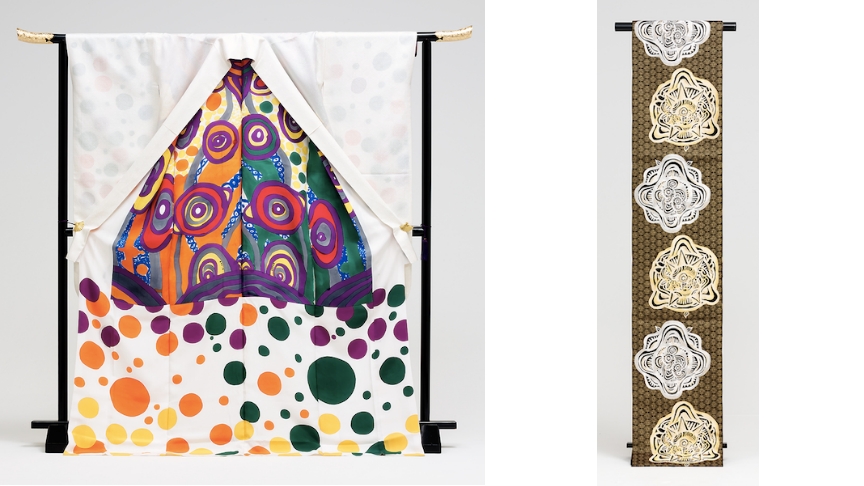
Read: Hidilyn Diaz congratulates Nesthy Petecio: ‘Ikaw ang panalo’ (VIDEO)
Margielyn Didal set an Olympic Record for Living Her Best Life
Update 26 August 2021: This article has been updated to correct the name of the designer of the Indonesia kimono
